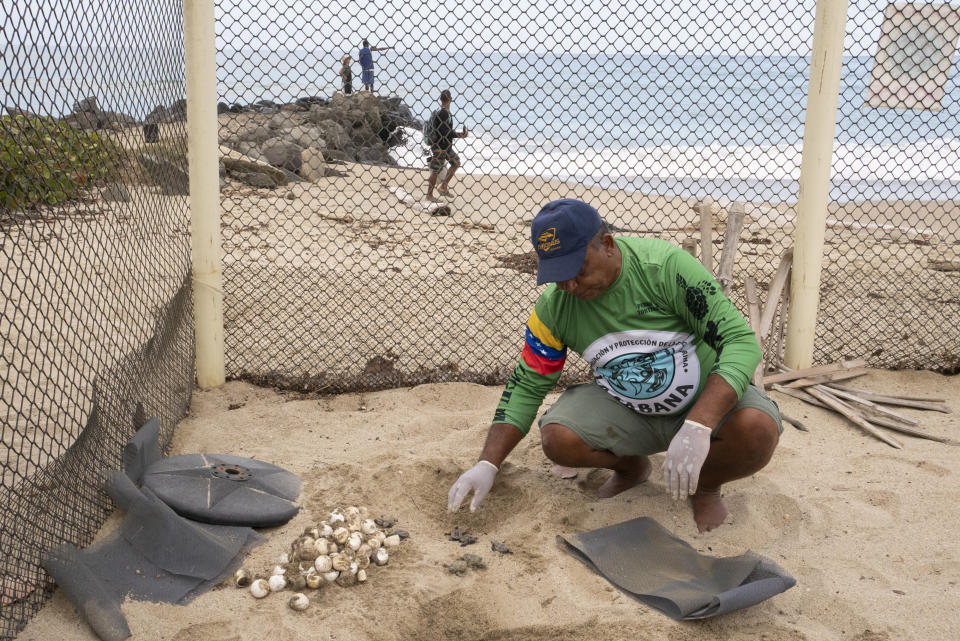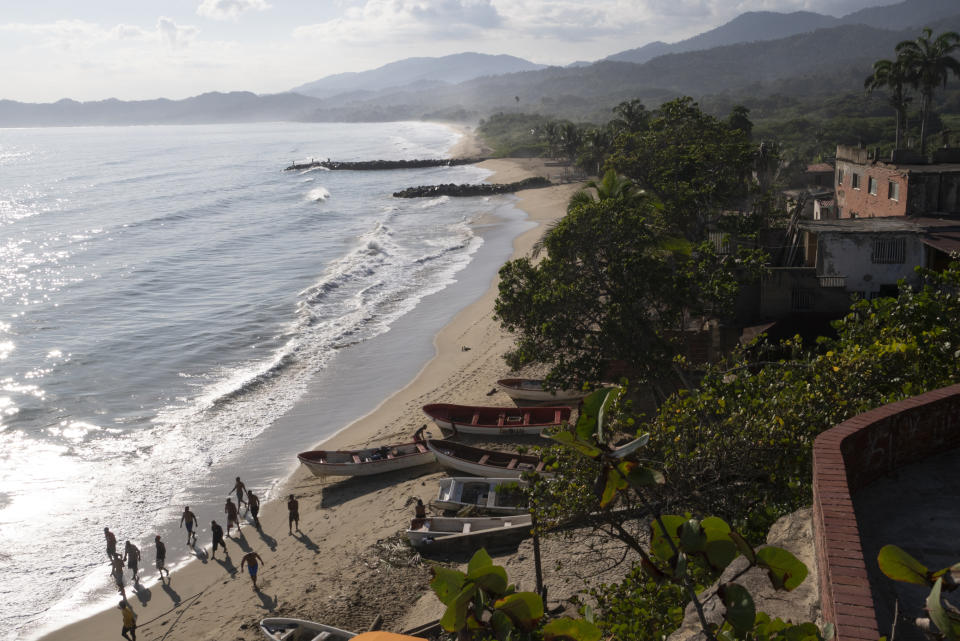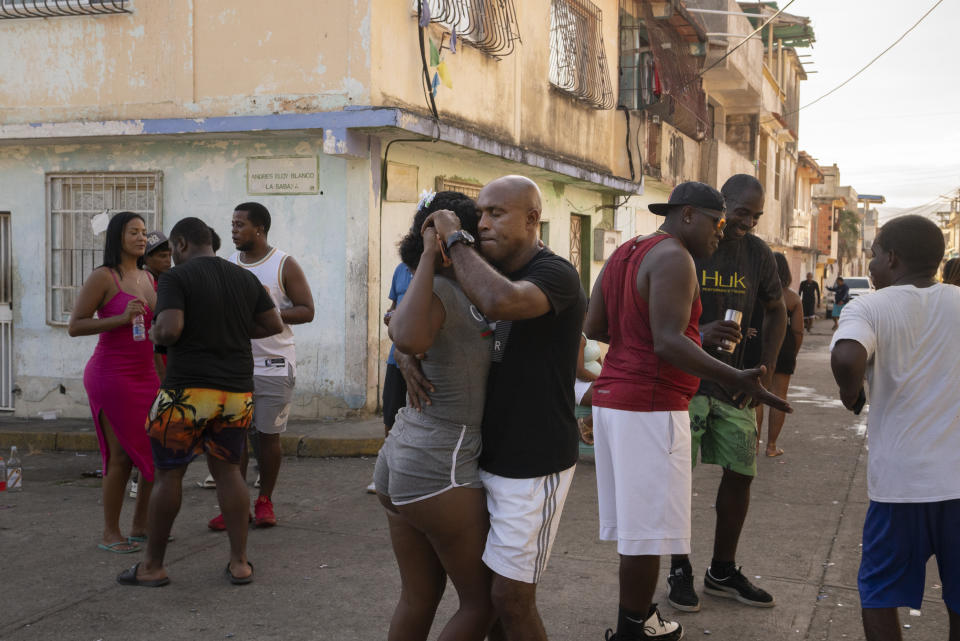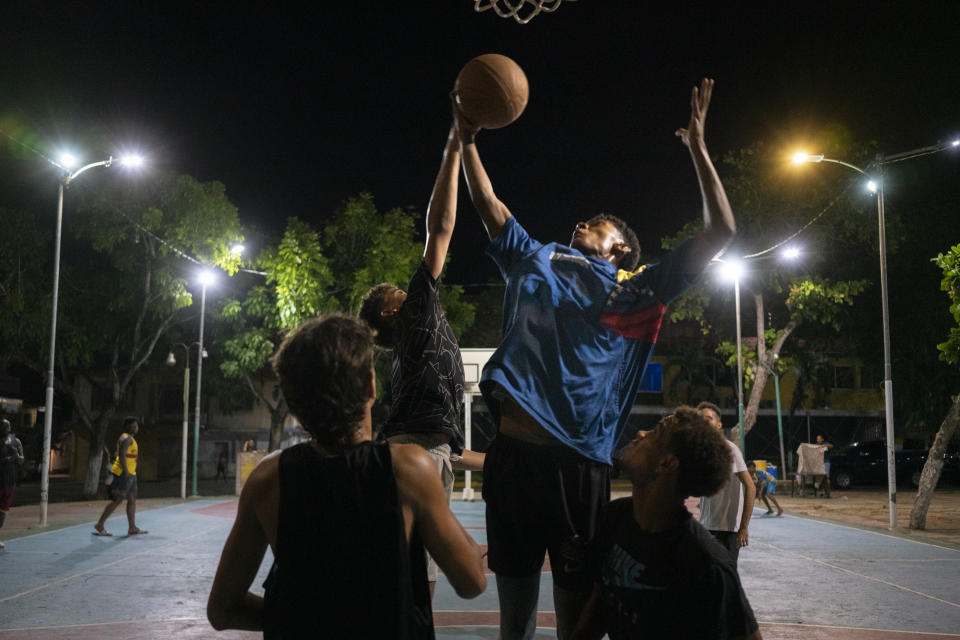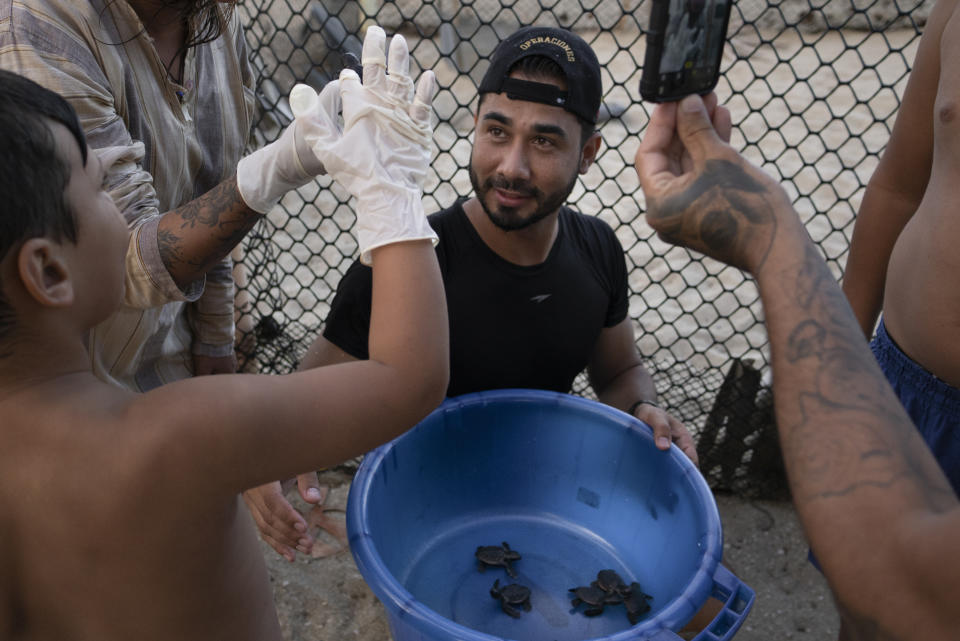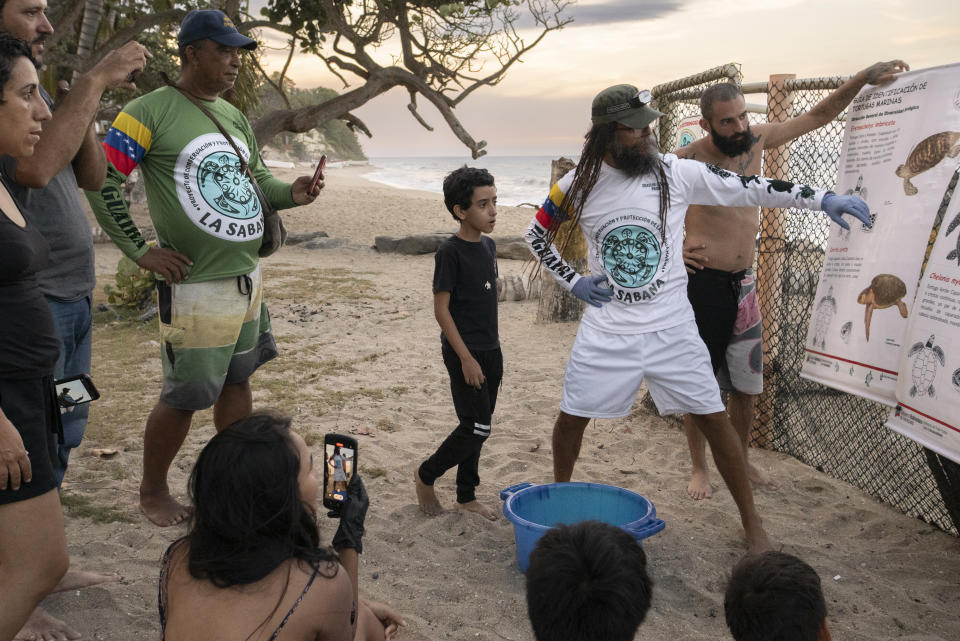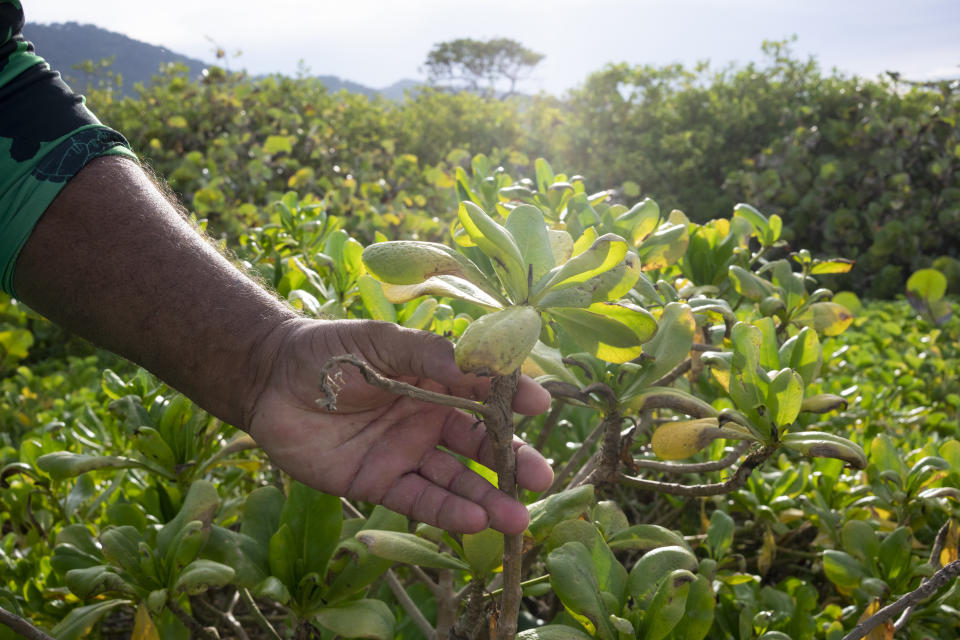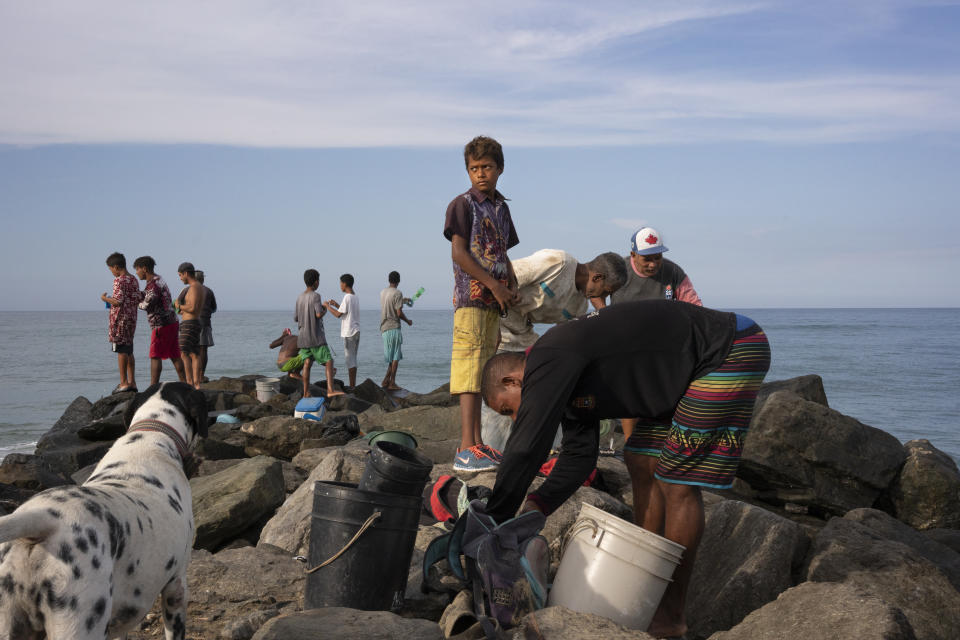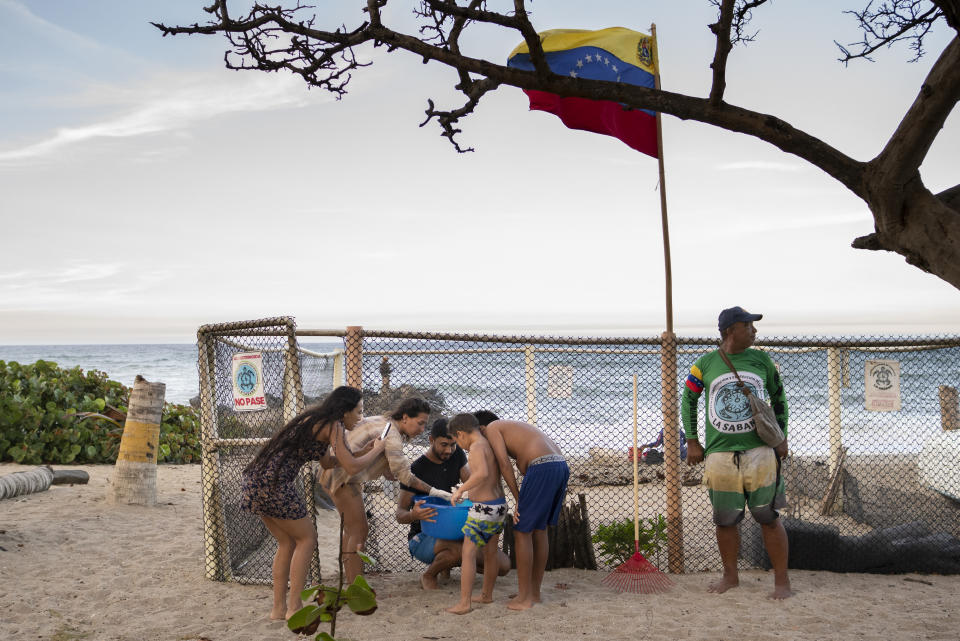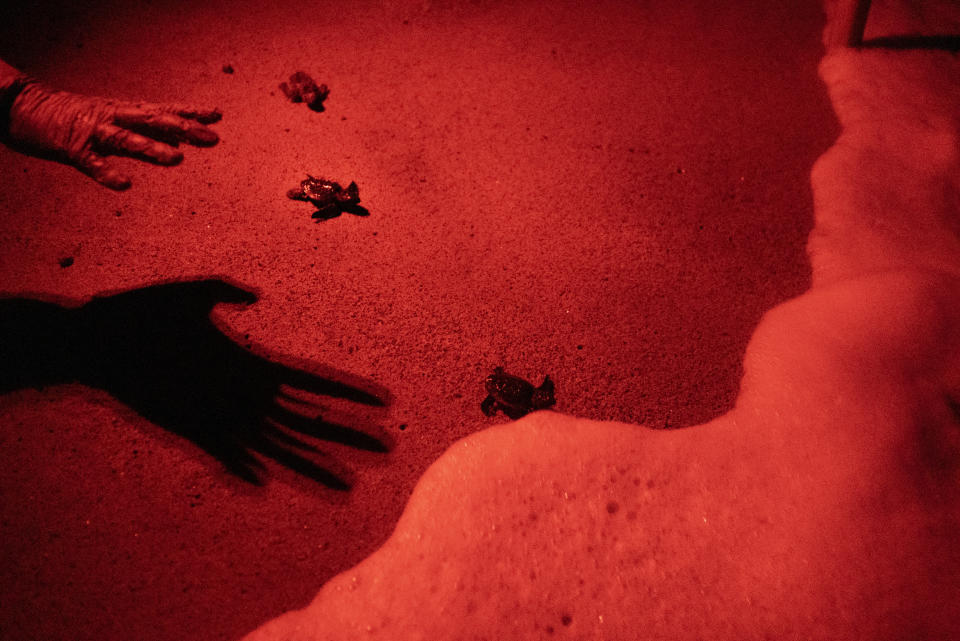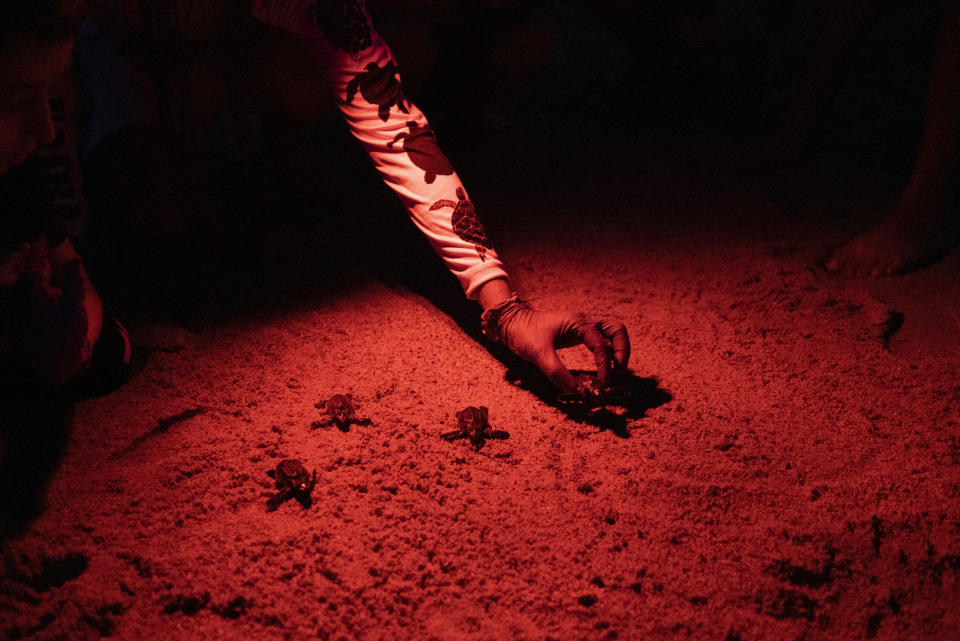A silent killer stalks sea turtles. A small town is trying to stop it.
LA SABANA, Venezuela - Pedro Luis Pérez woke up early on the clear, sunny morning to check on his hatchlings. At his nursery, a small, fenced-in square on the beach in this coastal town, a tiny loggerhead sea turtle struggled to break free from the warm sand.
Pérez stuck his hand into the sand and helped the creature out.
“This one was born to succeed,” he said.
But he was one of only a few. In his nest of 100 eggs, the last of the season, just 13 survived.
The turtles of La Sabana are vanishing. This small town on Venezuela’s Caribbean coast, known for producing such baseball stars as Alcides Escobar and Ronald Acuña Jr., is home to four of the seven sea turtle species on Earth.
Hawksbill sea turtles are classified by the International Union for Conservation of Nature as critically endangered: Facing an “extremely high risk” of extinction in the wild in the “immediate future.” Green and leatherback sea turtles are endangered: facing a “very high risk” of such extinction in the “near future.”
The loggerheads are designated as vulnerable: facing a “high risk” in the “near future.” Their global population, once in the millions, according to the Tucson-based Center for Biological Diversity, is down to an estimated 50,000. The greatest threats to the species include the loss of nesting grounds to coastal development and predators, entanglement in fishing equipment intended to catch other species, and pollution, according to the Gainesville, Fla.-based Sea Turtle Conservancy.
Adult sea turtles come to La Sabana each spring to lay eggs in the sand. The hatchlings emerge a few months later and head instinctively for the sea - a phenomenon that draws animal lovers and conservationists. Pérez and a team of local volunteers had spent years caring for and protecting these babies. But now a silent killer was spreading.
Pérez reviewed his handwritten notes for the day. He records the number of hatchlings born alive and the number of rotten eggs. Before this season, he said, he had never seen such low survival rates. A few weeks earlier, in a nest of 100 eggs, only two survived.
“We can’t figure out what is happening,” Pérez said.
In the weeks to come, he would learn that a similar crisis was emerging in a turtle population more than 300 miles away - a key to solving the mystery. But he and his team are still waiting for help saving the turtles.
Biologists studying turtles at Parguito Beach, a much-visited strand on Venezuela’s Isla Margarita, were also seeing plummeting survival rates. Biology student Angélica Burgos, a volunteer with the Nueva Esparta State Sea Turtle Conservation Group, identified a change in the local ecology as early as 2014, she told The Washington Post. “We realized that we were in the presence of an introduced plant,” she said.
Scaevola sericea, also known as beach cabbage or sea lettuce, thrives in the mangrove swamps of the South Pacific. On Margarita, biologists found its roots were crowding out the eggs before the turtles were even fully formed.
“We observed in the nests that the roots would occupy almost 80 percent of the hole,” Burgos said.
A Post reporter shared this information with Pérez back in La Sabana. He called Burgos to ask for a picture of the plant.
Pérez, who was sitting under a palm tree in front of the beach, looked at the photo on his phone and jumped up.
“Wait!” he shouted. “I’ve seen this!” He ran to the nursery. “There it is!”
In a nest laced with small, thin roots, he spotted a single head of beach lettuce. “That goddamned plant” had invaded miles of coastline in La Sabana.
In Margarita, Burgos was as surprised as Pérez.
“We noticed years ago something was happening,” she said. “We didn’t know it was happening anywhere else.”
Burgos doesn’t know how sea lettuce reached Venezuela. With its green leaves and white flowers, hoteliers in Margarita began years ago to plant it as landscaping.
It’s possible, Burgos said, that it was introduced in La Sabana by humans. Or its seeds could have traveled by sea. What’s clear, she said, is that it propagates quickly. According to the University of Hawaii’s College of Tropical Agriculture and Human Resources, it can grow from seed even without water.
“The problem,” Burgos said, “is not only that it spreads faster than other species, but that the eradication of it on the beach is very complicated.”
Specialists recommend removing large portions of the plant at once, putting them into garbage bags and incinerating them when possible. “Just by taking it out of the ground,” Burgos said, “you could spread it.”
Venezuela’s Environmental Ministry has confirmed that the plant was affecting turtle survival rates on Margarita and officials have promised to eradicate it, according to three people with direct knowledge. But so far, local activists say, no work has begun. The Environmental Ministry did not respond to a request for comment. The three people spoke on the condition of anonymity for fear of reprisals in this authoritarian state.
The turtles face other risks: Illegal collection for the black market, natural predators, and sand warmed by climate change, said Brad Nahill, president of the Portland, Ore.-based advocacy group SEE Turtles.
But the greatest threat, according to biologist Clemente Balladares, a researcher with the local environmentalist nongovernmental organization Provita and Fudena, is humans. The turtles are harmed by fishing, hunting and construction, including in protected areas.
“The plant is a real problem, but for now, it’s restricted to certain places,” Balladares said. Since its discovery in La Sabana, three other locations in Venezuela have reported the presence of the plant.
The activists in La Sabana are nurturing the beach’s turtles without significant help from the government, Pérez said.
In a small chair facing the sea, Pérez texts a WhatsApp group of activists around the country about the new threat discovered at his beach. The news ignites a conversation. “We need to be sure this is causing a problem,” one group member responded. “We alerted authorities but they said they have to wait until higher officials give the orders,” wrote another. “There is no political willingness.”
Each time the group releases the surviving hatchlings into the sea, local families gather for a celebration. A man who calls himself “Pachamama” - a Quechua name for Mother Earth - instructs a group of children.
“Each of you will take one of them, make a wish, set them free and walk with them to their new life,” he said. “One of them will come back to this same beach to lay its eggs in the future. Maybe that one is yours.”
Each of the 20 children, wearing gloves, picked up a baby turtle and held it close to their hearts. They closed their eyes and made wishes before gently placing the turtles in the sand.
One of the children followed a turtle into the ocean as it swam away, disappearing with the sunset.
The small group in La Sabana is now looking forward to the arrival of sea turtles to lay their eggs here. They include turtles born here years ago, when an even smaller group was fighting to keep them alive.
“I hope that I’ll see you again,” the boy said.
Related Content
The horse wars of Stormy Daniels
Alone in a bathroom: The fear and uncertainty of a post-Roe medication abortion
How Donald Trump’s mug shot became a defiant and divisive 2024 symbol
